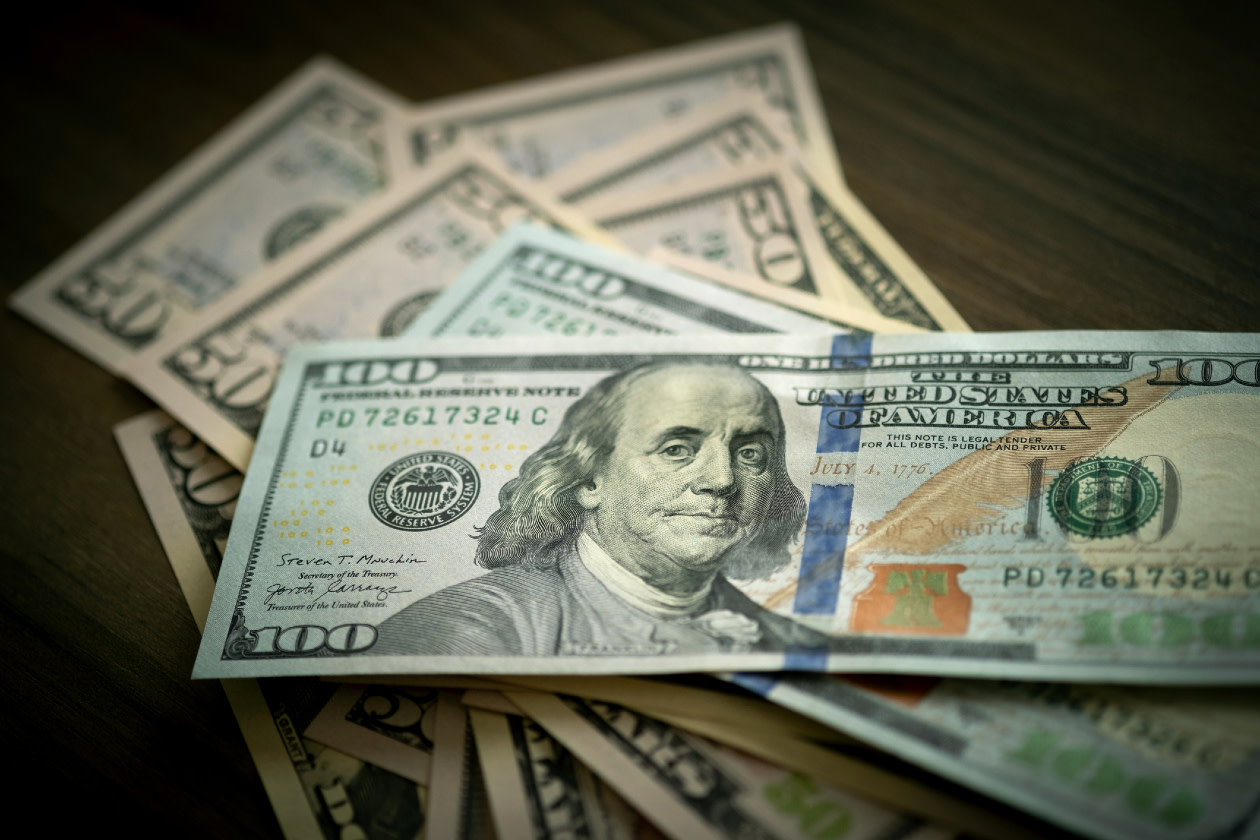The US dollar is the most traded currency in the world and often considered one of the few safe-haven currencies.
However, 2025 has been a horrid year for the most popular currency in the world – it’s fallen more than 10% in the first seven months of the year
But does this mark the end of an uptrend that started in 2011? We look at the factors driving the currency – and what it could mean for your investments.
This article isn’t personal advice. Remember, investments and any income from them can rise and fall in value, so you could get back less than you invest. Past performance isn’t a guide to the future. If you’re not sure if an investment’s right for you, ask for financial advice.
Trump and the dollar
The policies and statements of President Trump and his administration are the most obvious culprit for the dollar’s decline this year.
When Trump announced a bizarre set of tariffs on ‘Liberation Day’, this led to a simultaneous fall in the US dollar and rise in US Treasury yields – something we associate with emerging markets in crisis.
A series of unprecedented statements have led investors and foreign central banks to question their holdings of dollars.
Trump has pressured the US Federal Reserve (Fed) to cut interest rates, threatening the independence of the central bank.
His Big Beautiful Bill has increased expected government borrowing.
The Chairman of the Council of Economic advisers has written about taxing foreign central bank holdings of US Treasuries.
And his finance minister has suggested converting 10-year Treasury bonds into 100-year bonds.
The long cycle
In 1971, President Nixon decoupled the US dollar from the gold standard to prevent a run on US gold reserves.
This ended the Bretton Woods regime, the monetary system that the US and other nations put in place in 1944 as a framework for the post-war global economy.
Since then, the US dollar has gone through three long cycles.
The US dollar since 1971
What drives these US dollar cycles?
We think these four factors will help us assess whether we’ve reached a turning point – valuation, interest rates, investor flows and geopolitics.
Valuation
At the end of last year, the value of the dollar was higher than at its peaks in 1985 and 2001.
The chart above shows the performance of the dollar against other leading currencies, adjusted for their relative inflation rates.
The greenback has swung between overvalued and undervalued over this 50-year period.
Interest rates
In August 1979, when Paul Volcker became chair of the US Federal Reserve, interest rates were 11%.
By June 1981, the Fed had pushed rates up to their all-time high of 19%. This brought about the end of a decade of high inflation. It also spurred a big rise in the dollar.
The interest rate story today is more nuanced.
Most major central banks in the developed world are now independent, reducing government interference. And they have adopted inflation targeting. This has anchored long-term inflation expectations, even during the recent bout of price rises.
We expect US inflation to rise in the near-term due to tariff hikes, before falling back towards target next year. This means US interest rates are likely to remain above those in Europe and Japan.
In theory, higher interest rates compared to other countries makes investing in dollars more appealing, increasing demand for dollars and putting upward pressure on its value.
But, with rates already low in the euro area and Japan, the US has more room to cut over the coming year.
Which matters more – higher rates or a narrowing of the difference?
In practice, exchange rates follow changes in the markets’ expectations of interest rates. These expectations shift as economic news comes out. When we look back from the future, it’s likely that it was something unexpected that mattered most.
Investor flows
In August 1995, Netscape listed at $28 dollars per share and rose to $74 on its first day of trading. This kicked off a wave of enthusiasm for technology, media and telecoms stocks.
Around the same time, investors’ interest in emerging markets reversed due to a series of crises from 1997 to 1999. Investments flowed into the US stock market and boosted the dollar over the next five years.
The dotcom bubble burst in 2000.
A year later, China entered the World Trade Organization, heralding a two-decade boom in economic growth. Investor flows U-turned, sending the dollar into reverse.
The current bull market in the dollar started in 2011, when the euro area was in the midst of a crisis. Since then, investor appetite for US technology stocks has soared – more recently due to the potential of artificial intelligence.
Today, valuations for US stocks have risen towards the levels of the peak in the dotcom bubble on some measures. But the major companies behind the boom today are enjoying strong earnings growth – a missing ingredient in the dotcom era.
The bull case for the dollar is a continuation of US exceptionalism.
The importance of geopolitics
In September 1985, finance ministers from the US, France, West Germany, Japan and the United Kingdom met in the Plaza Hotel in New York to sign an agreement to weaken the US dollar, the Plaza Accord.
They wanted to reverse the trade imbalances building up, in part caused by an overly expensive dollar. The agreement was highly successful, triggering a prolonged decline in the greenback.
Political events in 2025 are a lot less coordinated.
The news on tariffs seems to change daily. In an environment of weak global economic growth, few countries are keen to have an appreciating currency since it makes their exports less competitive.
Mario Draghi’s report has highlighted the challenges faced by the slow growing EU economy.
However, there is room for optimism.
A big boost in government spending in Germany is a significant shift in policy and has the potential to raise growth over the next few years. A more dynamic Europe could be the catalyst for a turn in the dollar cycle.
What could all this mean for investors?
We find the valuation case for a weaker dollar compelling.
However, when we look at interest rates, investors flows and geopolitical factors, it’s less easy to build a high conviction case that we’ve reached a clear turning point in currency markets.
And we know that currencies are notoriously hard to predict.
We’re more confident in looking at the investing case IF the dollar falls.
The most obvious conclusion is to favour non-US stocks over US stocks. Emerging markets are particularly sensitive to dollar moves, both shares and bonds. These less-developed economies often borrow in dollars, so a weaker US currency would lower the cost of their debt repayments.
Commodities are typically priced in dollars. A lower dollar therefore makes commodities more affordable – good news for commodity-producing companies and countries.
The US dollar also matters for UK stock pickers. It lowers the revenues from dollar earners and lowers the cost of US imports. This matters more for international businesses than domestic players.
Finally, a weaker dollar means a stronger pound, yen, euro and other currencies – on average. But the pound is sensitive to domestic issues, not just international developments – remember the Truss mini-budget.
Individual currency moves are hard to forecast. Investors can reduce the volatility of their portfolio by diversifying internationally, exposing them to a range of different currencies.





